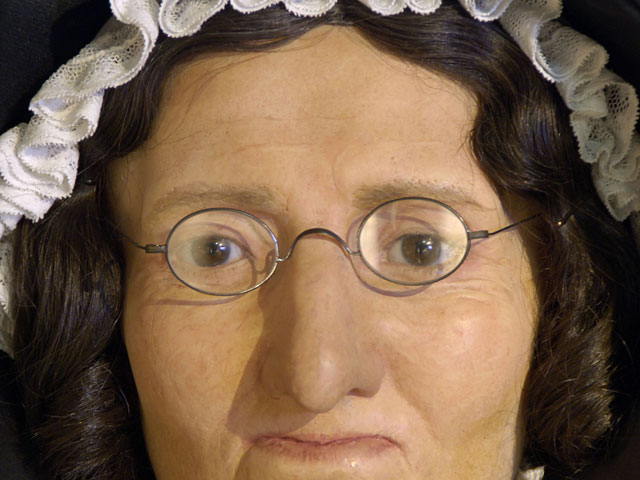Madame Tussaud Meets the Guillotine November 6, 2012
Author: Beach Combing | in : Modern , trackback***Dedicated to Laura: for an excellent background to Madame Tussaud follow this link (and look out particularly for Brad Pitt’s knickers)***
Anna Maria Tussaud (obit 1850) came to Britain in 1802 to show her famous wax impressions as an entrepreneur, but she remained in the country as an exile once the Napoleonic Wars had begun. There is some question about whether she, in any case, wanted to go back to a country that had just been through ten vicious years of revolution. What is not generally appreciated is how deep herself Madame Tussaud had waded or been pushed in blood.
AMT had given wax-sculpting lessons to royalty in the last years of the ancien régime as well as modelling the king and his wife. And when the revolution came AMT found herself caught between two camps. Her own aristocratic contacts and pretensions were checked by the fact that her uncle and wax guru, Philippe Curtius, was heavily involved on the side of the ‘people’.
In the chaotic weeks that followed AMT did not enjoy herself. 12 July 1789 some of her models were borrowed for a street protest against the royals. And, then, as the revolution took hold, she was once briefly held for execution: her hair was even cut in preparation. Released thanks to her uncle she was, next, asked by the Committee of Public Safety to take the wax impressions of those that had been guillotined. For a woman in her mid-late twenties it must have been an extraordinary experience. After all, she had known many of those whose heads were now placed on the table before her. As a biography recalls:
Though Madame Tussaud did not witness the execution of Marie Antoinette, yet she remembered seeing the Queen pass on a tumbril through the jeering crowds to the scaffold. The once gay and light-hearted Queen was dressed in white for her last pageant on earth, her hands tied behind her. The spectacle brought back to Madame memories of the royal palace where she had frequently attended to give lessons in modelling, and she was so overcome that she fainted. Perhaps the most horrifying experience undergone by Madame Tussaud during this terrible period was when the mangled head of the greatly beloved Princess de Lamballe was brought to her that a cast might be made. In vain did she protest that she could not endure the ordeal. The brutal murderers compelled her to comply.
Nor was it only the overawed aristocrats, whose heads she had to take onto her table. Robespierre had sponsored Tussaud and even used her exhibitions for his own political ends.
In those days Madame Tussaud often sat next Robespierre at dinner. She describes him as always extremely polite and attentive, never omitting those little acts of courtesy which are expected from a gentleman when sitting at table with a lady, anticipating her wishes, and taking care that she should never have to ask for anything… Robespierre’s conversation was generally animated, sensible, and agreeable, but his enunciation was not good. There was nothing particularly remarkable in his conduct, manners, or appearance when in society. If noticed at all, it could only be as a pleasant, gentlemanly man of moderate abilities.
But then Robespierre’s moment arrived too and she found herself staring into his dead eyes with wax and scalpel in her hands.
When she came to London with her exhibits these revolutionary heads were at the very centre of the displays on offer on Baker Street. Indeed, we read:
When the Exhibition was opened in Baker Street, the Chamber of Horrors became a recognised feature of the collection. It was at first called the ‘Dead Room’, although some designated it the ‘Black Room’, owing to its sombre aspect. Its chief exhibit at that time was the guillotine, surrounded by the impressions of heads that had been decapitated by it. Here also was shown the model of Marat dying in his bath, besides many other relics of the Revolution. Indeed, it might have been regarded as the nucleus of an historical museum dealing exclusively with the last days of the old French Monarchy. Even the walls were constructed and draped in imitation of the interior of the Bastille, the principal keys of which were shown therein as mementos of unusual interest
However, scarred Madame Tussaud was by the experience of the revolution she knew how to milk the horror, even sending her son to Paris to retrieve a genuine guillotine – the very one mentioned above – for her display. Other Tussaud stories: drbeachcombing AT yahoo DOT com



